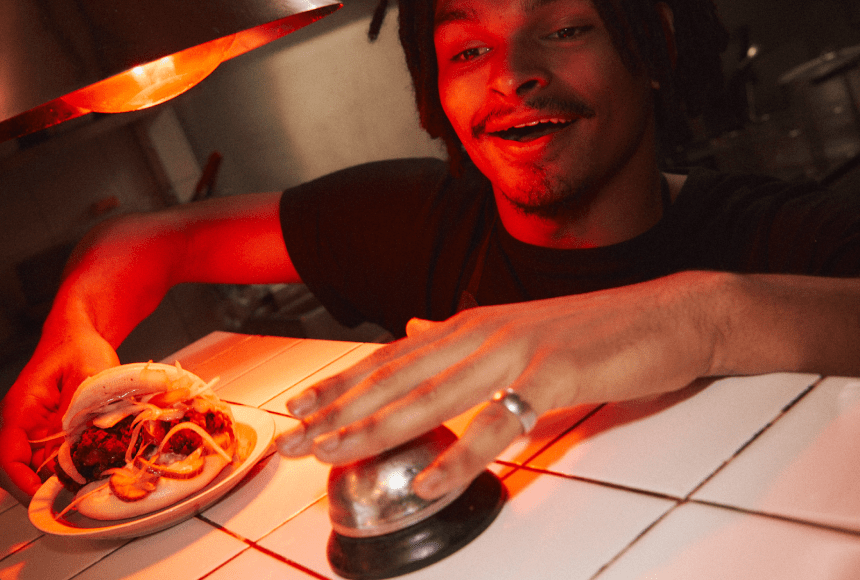
Making Service Flow Smoother, Faster, and More Enjoyable
A Glimpse into the Busy Life of a Server
Picture a typical Friday night in your restaurant. The dining room is full, conversations are buzzing, and your servers are weaving between tables, balancing trays of appetizers while smiling at every guest. They need to keep an eye on new arrivals, confirm allergies in the kitchen, refill water glasses, and handle payment requests — often all at once. It’s an exhilarating scene, but one that can quickly lead to stress and errors if your staff is running at full tilt.
Tableside ordering offers a clever way to lighten this load. By letting customers place their orders directly from a smartphone or a device at the table, you remove time-consuming steps and let servers focus on delivering a personalised experience. This technology, which integrates seamlessly with systems like Sunday, is transforming how restaurants operate. The result? Less stress, fewer mistakes, and happier teams all around.
Understanding the Basics of Tableside Ordering
Tableside ordering refers to any system that allows diners to view menus and submit their orders without relying entirely on a server to key them in. Some restaurants use handheld devices provided to each table, while others rely on QR codes that diners can scan with their phones. Both approaches let customers confirm choices in real time. The order then travels directly to the kitchen or bar, often via a point-of-sale (POS) integration.
This simple shift has a significant impact on a server’s role. Instead of spending half their time taking orders or returning to input them, servers can float through the dining area to check in on tables, answer questions, and offer friendly recommendations. And that’s just the beginning. Let’s explore how it simplifies their day-to-day tasks.
1. Less Time Spent on Manual Order Entry
In many traditional setups, servers move from table to table with a notepad in hand. They juggle details of starters, mains, sides, and personal requests. Then they sprint to the terminal or kiosk to transfer those scribbles into a digital ticket. Any delay or distraction can lead to misinterpretation (and the dreaded, “Wait, was that an extra side of chips or a swap?”).
- Error Reduction: When diners place their own orders, the risk of a server mixing up table numbers or menu items plummets.
- Saved Steps: No more repeated back-and-forth to the POS. The order transmits automatically to the kitchen and bar.
According to The Caterer (source), many hospitality businesses that adopt digital ordering tools notice a measurable drop in ordering mistakes. That’s great news for the servers, who’d rather avoid apologising for any confusion during a busy rush.
2. Faster Table Turnover
Time is precious when tables are in high demand. Every extra minute spent waiting to place an order or settle a bill can slow down turnover. Tableside ordering streamlines both steps. Diners browse the menu immediately, place orders without waiting for a server to appear, and, with integrated solutions, pay the bill at their convenience.
- Less Waiting: Guests who are ready to order can do so. Servers can greet new arrivals or handle special requests without feeling torn.
- Quicker Bills: When dessert is finished, diners can settle up via their phone rather than flagging down a busy staff member. That paves the way for a smoother exit, freeing the table sooner for new arrivals.
From a server’s perspective, being able to tidy up and reset a table for the next group without that lingering wait for payment is a huge relief. It keeps the workflow flowing nicely, even on hectic evenings.
3. Fewer Interruptions, More Quality Time
One of the biggest challenges servers face is balancing the need to be attentive with the risk of constant interruptions. On a busy shift, they might be taking an order at one table when a diner at another table signals to ask for a side of sauce. Then the bar calls for them to collect drinks, while the host waves them over to handle a booking question.
When ordering and bill payment can happen at the table via a digital interface, servers regain control over their schedule. They’re still present and ready to help, but many small demands (like an extra portion of fries or a second glass of wine) can be handled by the diner directly on their phone.
- Better Conversations: Without constant interruptions, servers have more time for genuine engagement. They can chat about daily specials or the story behind a new local craft beer. This personal interaction is one of the best parts of the job — it’s why many choose to work in hospitality in the first place.
- Improved Teamwork: Freed from small tasks, servers can help each other more. One colleague might jump in to deliver food if another is answering a question at a different table. The dynamic becomes more collaborative.
4. Enhanced Tipping Opportunities
Servers rely heavily on tips to supplement their base wage. Tableside ordering can actually improve tip earnings, despite fears that technology might reduce personal contact. Here’s how:
- Fewer Errors, Happier Diners: The more accurate the orders, the more satisfied the guests. Satisfied guests typically tip better.
- Smooth Payment Flow: Many digital solutions, including Sunday, let diners add a gratuity with a quick tap. The suggestion to tip remains gentle and non-intrusive, yet it often encourages bigger contributions.
Because servers can devote more time to conversation and ensuring each meal is perfect, the diner’s sense of receiving excellent service only grows. This positive feeling is a major tipping driver in UK restaurants.
5. Streamlined Communication with the Kitchen
The classic “server scribbles on a pad” method introduces multiple points of potential miscommunication. Maybe the handwriting is messy, or the server forgets to mark a dish as gluten-free. By contrast, tableside ordering transmits requests straight to the kitchen, often with custom fields for special instructions.
Less confusion in the back of house means servers don’t have to run to the line chef to clarify what “well done but still pink in the middle” might mean. Everyone works off the same digital order, updated in real time if a guest changes their mind. This synergy between front and back of house keeps stress levels down and fosters a calmer environment.
6. Real-Time Menu Updates
Servers know the frustration of discovering, mid-shift, that an item is sold out — right after they’ve promised it to a customer. It leads to awkward apologies and an annoyed diner. With a digital menu, you can remove items the moment the kitchen runs out or highlight a last-minute special.
- Fewer Disappointments: No more promoting a dish that’s no longer available.
- Increased Server Confidence: If servers are certain the digital menu is up-to-date, they can focus on upselling or describing flavours rather than second-guessing stock levels.
For guests, real-time updates reduce the let-down factor. For servers, it’s one less point of stress when your evening’s service is in full swing.
7. Easier Upselling without the Hard Sell
Suggesting a premium starter or a fancy cocktail can be a tricky art. No server wants to sound pushy. Tableside ordering helps by naturally highlighting add-ons or special deals. Diners might see a “Recommended Pairing” prompt or a rotating list of desserts that entice them to order more.
Meanwhile, servers can offer personal tips and let the digital interface do the rest. It’s a gentle way to nudge guests toward more indulgent choices without feeling intrusive. The diner feels they’re deciding at their own pace, guided by useful suggestions on their screen.
8. Greater Focus on Customer Service and Ambiance
Ultimately, a server’s job isn’t just to relay orders or deliver the bill. Great servers set the tone of the whole dining experience. They shape the atmosphere, handle allergies or preferences with finesse, and make each guest feel special.
When technology takes care of repetitive tasks, you free up valuable mental energy. Now servers can:
- Explain the story behind a newly launched local craft gin.
- Recommend a vegetarian option that suits a diner’s dietary needs.
- Stop by to chat about the day’s events or how the diners discovered the restaurant.
These simple gestures might seem small, but they build a sense of connection that diners remember long after they pay their tab. It’s the difference between a meal that’s “okay” and one that leaves people raving.
How Sunday Makes Tableside Ordering Seamless
You might be wondering how a solution like Sunday fits into this picture. Sunday allows diners to pay via QR code, leave a tip, and even write a quick Google review if they wish. Integrating tableside ordering with Sunday’s payment system amplifies the benefits:
- One-Stop Shop: Diners order, pay, and tip in one smooth flow, removing multiple handoffs or waiting periods.
- Automatic Check Splitting: Groups can split the bill without requiring a calculator or the server to manually handle complicated requests.
- Reduced Service Bottlenecks: During peak times, servers can see at a glance which tables have paid, which are still ordering, and who might need an extra check-in.
With a fully integrated approach, staff can quickly pivot their attention to where it’s needed most, whether that’s responding to a new arrival at the door or ensuring a special birthday dessert goes out on time.
Training Your Team for Success
Introducing any new system can unsettle staff if not handled carefully. Keep these tips in mind for a smoother transition:
- Hands-On Demonstrations: Let servers try the tableside ordering process from both angles — as a diner placing an order and as staff managing it from the POS. A little practice clears up most questions.
- Clear Communication: Explain how the system benefits them personally. Emphasise faster table turnover, fewer mistakes, and happier diners (which often translate into better tips).
- Ongoing Support: Provide a go-to point person or manager who understands the technology deeply. This ensures any glitches or confusion can be addressed quickly.
Once your team sees they’re not being replaced, but rather supported by the technology, the mood often shifts from cautious to enthusiastic.
Addressing Customer Concerns
Some diners may balk at using their phone for orders. They might worry about losing the personal touch or not having direct interaction with staff. Others might be unfamiliar with QR codes or have limited data on their phone.
- Offer Alternatives: Keep a few physical menus on hand for those who prefer them. Let guests know a server is happy to input orders manually if needed.
- Highlight the Benefits: Reassure customers that your servers are still around to answer questions or share recommendations. A short note on the table can briefly explain how using the digital option can reduce wait times.
- Stay Flexible: If someone seems uncomfortable, adapt on the spot. Offer to take their order personally, no questions asked.
Kindness and flexibility go a long way. Over time, as your regulars become accustomed to the system, you might find more and more of them happily embracing it.
Measuring Results and Refining the Process
To confirm that tableside ordering is improving your servers’ efficiency, track a few key metrics:
- Table Turnover Rate: Compare how quickly you seat and reset tables before and after implementation.
- Order Accuracy: Check if ticket misfires or returns drop after customers start entering their own requests.
- Server Feedback: Ask your staff how they feel about their workload and their interactions with diners. Are they less stressed, or do they see new challenges arising?
- Tip Amounts and Frequency: Notice any rise in tipping patterns, especially if digital gratuities are simpler to add.
Gathering this data helps you refine your approach. Maybe you’ll add more visuals to your digital menu or highlight popular upsells. Maybe you’ll shift staffing schedules to better accommodate the improved table turnover. Constant iteration ensures you get the most out of your new technology.
Fostering a Happier Team, One Order at a Time
Tableside ordering isn’t just about fancy tech. It’s about giving your servers room to excel at the human side of hospitality. Free from the grind of repetitive tasks, they can focus on greeting diners warmly, discussing flavour profiles, and helping guests discover new favourites.
By reducing the chance for errors, speeding up service, and easing communication, you remove needless stress from your servers’ shoulders. That benefits everyone — staff, diners, and, of course, your bottom line. Modern restaurants thrive on balancing efficiency with authenticity, and tableside ordering offers a perfect way to achieve that harmony.
If you’re considering the leap, remember that an integrated approach with solutions like Sunday makes the rollout smoother. Empower your servers with the best tools, train them well, and watch as they turn each shift into a more rewarding, less chaotic experience. And that might just be the secret recipe for a restaurant that keeps both team members and customers coming back for more.
Find out more today
Drop us your details below and we’ll reach out within the next 24
All your orders – in and out.
Our mobile ordering solution allows your customers to order and pay whenever they are ready with an integrated QR code.


